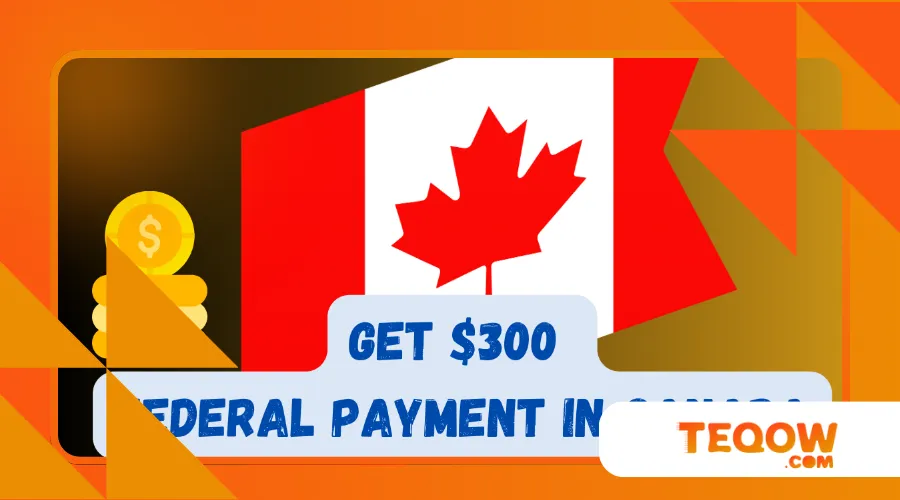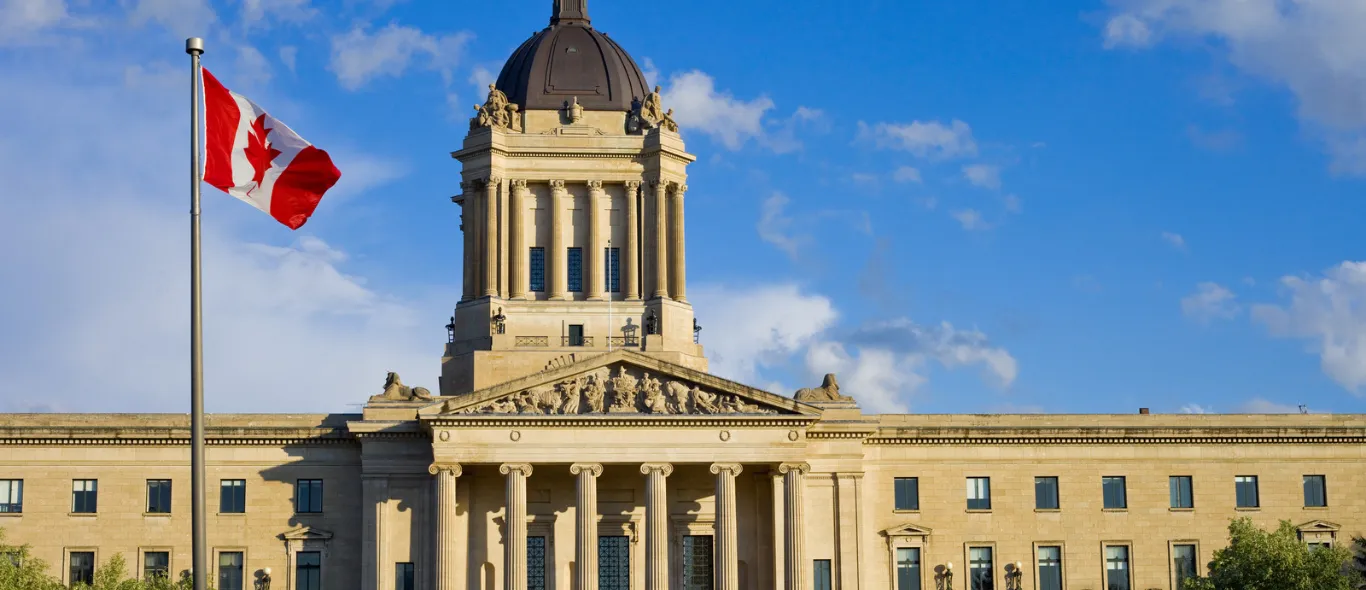How to Get the New $300 Federal Payment in Canada in 2025: Who Qualifies and How to Apply

The federal payment in Canada for 2025 has sparked widespread interest, offering a lifeline to millions grappling with rising living costs.
This one-time $300 financial boost, announced by the Canadian government, aims to ease the burden of inflation, soaring grocery prices, and housing expenses.
Designed for low- to moderate-income households, this initiative reflects Ottawa’s commitment to supporting vulnerable Canadians during economic uncertainty.
But who qualifies, and how can you ensure you don’t miss out?
This guide dives deep into the eligibility criteria, application process, and proactive steps to secure this payment, blending practical advice with strategic insights to help you navigate the system seamlessly.
Why the $300 Federal Payment Matters
Imagine your budget as a boat navigating choppy economic waters.
The $300 federal payment in Canada acts like a sturdy paddle, giving you just enough momentum to stay afloat.
Inflation in Canada hit 3.2% in 2024, according to Statistics Canada, squeezing household budgets with higher costs for essentials like food and fuel.
For low-income families, seniors, and individuals with disabilities, this payment isn’t just a drop in the bucket—it’s a meaningful step toward financial stability.
Unlike recurring benefits, this one-time sum offers immediate relief, letting recipients address urgent needs without bureaucratic delays.
This initiative builds on Canada’s history of targeted relief, like the GST/HST Credit and Canada Child Benefit (CCB).
It’s a pragmatic response to economic pressures, prioritizing those who need it most.
But here’s the catch: you won’t get it by sitting back.
Proactive steps, like updating your CRA profile, are crucial.
Why leave money on the table when a few simple actions can secure your share?
Additionally, understanding the broader economic context can help you appreciate the significance of this payment.
As inflation continues to impact daily life, such targeted support becomes increasingly vital for maintaining financial stability among vulnerable populations.
Who Qualifies for the $300 Federal Payment?
Eligibility for the federal payment in Canada hinges on clear, specific criteria designed to target those facing financial strain.
The Canada Revenue Agency (CRA) administers this program, using your 2024 tax return to assess eligibility.
Here’s a breakdown of who qualifies:
- Residency: You must be a Canadian resident for tax purposes on December 31, 2024. Non-residents, even if they own property or work in Canada, don’t qualify.
- Age: Applicants must be at least 18 years old by the payment date. Exceptions exist for those under 18 receiving disability benefits or parenting children under the Canada Child Benefit.
- Income Level: The payment targets low- to moderate-income individuals. For 2025, single individuals earning under $32,000 annually or families with a combined income below $65,000 (for a couple with two children) typically qualify. Income thresholds adjust based on family size and regional cost-of-living factors.
- Tax Compliance: You must have filed your 2024 income tax return by April 30, 2025. Late or incomplete filings can disqualify you.
- Legal Status: You cannot be incarcerated for more than 90 days or deceased before the payment date.
For example, consider Sarah, a single mother in Winnipeg earning $28,000 annually.
She files her taxes on time and updates her CRA My Account with direct deposit details.
She qualifies automatically and receives the $300 in her bank account by early 2025.
Contrast this with John, a freelancer in Toronto who misses the tax filing deadline due to a hectic schedule.
Despite earning $30,000, he risks missing the payment because his 2024 return isn’t processed.
The table below summarizes eligibility criteria:
| Criterion | Requirement |
|---|---|
| Residency | Canadian resident for tax purposes on December 31, 2024 |
| Age | 18 or older (exceptions for disability/child benefits) |
| Income | Single: <$32,000; Family of four: <$65,000 (varies by region/family size) |
| Tax Filing | 2024 income tax return filed by April 30, 2025 |
| Legal Status | Not incarcerated >90 days or deceased before payment |
Moreover, staying informed about changes in eligibility criteria or income thresholds can help you better prepare for future payments.
For the most accurate information, consider visiting the official Canada Revenue Agency (CRA) website.
How to Secure the Federal Payment in Canada
The beauty of the federal payment in Canada lies in its simplicity: no separate application is required.
The CRA automatically assesses eligibility based on your 2024 tax return.
However, “automatic” doesn’t mean effortless.
Here’s how to ensure you receive the payment without hiccups:
- File Your 2024 Taxes Early: The CRA uses your tax return to verify income and residency. File by April 30, 2025, to avoid delays. Even if your income is minimal, filing is mandatory to qualify.
- Set Up Direct Deposit: Direct deposit ensures faster delivery—often within five business days of the payment date. Log into your CRA My Account to confirm or update your banking details. Without direct deposit, you’ll receive a mailed cheque, which can take weeks.
- Update Your CRA Profile: Ensure your mailing address and contact information are current. Outdated details can delay or prevent payment. For instance, Maria, a recent mover to Vancouver, updated her address via CRA My Account and received her payment on time, while her friend, who forgot to update, waited an extra month for a cheque.
- Check for Tax Debts: Outstanding tax debts may offset your payment. Review your CRA account for any balances and settle them promptly.
- Monitor CRA Announcements: Payment dates are expected in early 2025, likely between January and March. Check Canada.ca or your CRA My Account for updates.
The process is streamlined, but don’t assume it’s foolproof.
A 2023 CRA audit found that 12% of eligible Canadians missed benefits due to outdated contact information or late tax filings.
Don’t let that be you.
Additionally, consider reaching out to community organizations that offer assistance with tax filing and CRA-related inquiries to ensure you don’t miss out on any benefits.

Payment Schedule and Delivery Methods
The federal payment in Canada for 2025 is slated for distribution in the first quarter, with February 20, 2025, as a tentative date based on previous relief programs.
The CRA offers two delivery methods:
- Direct Deposit: The fastest option, depositing funds directly into your bank account. Most recipients see funds within days.
- Mailed Cheque: For those without direct deposit, cheques are mailed to the address on file. This method can take 10–15 business days, especially in rural areas.
Here’s a projected payment schedule for 2025:
| Event | Date | Details |
|---|---|---|
| Tax Filing Deadline | April 30, 2025 | 2024 tax return must be filed to determine eligibility |
| Payment Announcement | January 2025 (estimated) | CRA confirms exact dates via Canada.ca |
| Payment Distribution | February 20, 2025 (tentative) | Direct deposit or mailed cheques issued to eligible recipients |
Delays can occur if your CRA profile is incomplete or if processing backlogs arise.
To stay ahead, set calendar reminders to check your CRA My Account in early 2025.
Furthermore, being aware of potential delays in processing due to high volumes during tax season can help you manage your expectations better.
+ Mental Health Support: The New Cornerstone of Employee Benefits in Canada
Why This Payment Stands Out
Unlike recurring benefits like the GST/HST Credit, the federal payment in Canada is a one-time, tax-free boost.
It won’t affect your taxable income or eligibility for other programs like Old Age Security (OAS) or the Canada Child Benefit.
This makes it a versatile tool for covering unexpected expenses—think a car repair or a spike in utility bills.
For low-income seniors or families, this payment complements existing supports, creating a layered safety net.
However, the program isn’t without flaws.
A 2025 policy analysis by the Fraser Institute noted that one-time payments, while helpful, don’t address structural issues like housing affordability or wage stagnation.
Critics argue that recurring aid or tax reforms would offer more sustainable relief.
Still, for immediate needs, $300 can make a tangible difference, especially for those living paycheck to paycheck.
Moreover, understanding the long-term implications of such payments can help inform discussions about more comprehensive economic reforms needed to address systemic issues.

Common Pitfalls and How to Avoid Them
Securing the federal payment in Canada requires vigilance.
Here are common mistakes and how to sidestep them:
- Late Tax Filing: Missing the April 30, 2025, deadline can disqualify you. File early, even if you owe no taxes.
- Outdated CRA Information: An old address or bank account can delay or redirect your payment. Log into CRA My Account monthly to verify details.
- Assuming Eligibility: High earners or non-residents may assume they qualify. Check income thresholds and residency status to confirm.
- Ignoring Notifications: CRA communicates updates via My Account or mail. Regularly check both to stay informed.
For example, consider a hypothetical case: Tom, a part-time worker in Halifax, assumed he’d qualify because he earned $25,000 in 2024.
But he didn’t update his address after moving, and his cheque was sent to an old address, causing a three-month delay.
Proactive updates could have saved him the hassle.
Additionally, staying connected with local community resources can provide valuable reminders and assistance in navigating the application process.
++ Brazil-Canada Partnership Offers 25K Vocational Training Slots
Maximizing Your Financial Support
The $300 federal payment in Canada is just one piece of a broader support system.
Eligible recipients may also qualify for:
- Canada Child Benefit (CCB): Monthly tax-free payments for families with children under 18, based on income and family size.
- GST/HST Credit: Quarterly payments to offset sales taxes, with 2025 dates set for January 3, April 4, July 4, and October 3.
- Canada Workers Benefit (CWB): A refundable tax credit for low-income workers, paid quarterly.
To maximize benefits, consult a tax professional or use CRA’s online calculators to assess eligibility.
Combining these programs can significantly ease financial strain.
For instance, a family of four in Ontario earning $50,000 might receive $300 plus $1,500 annually from CCB and GST/HST Credit, creating a robust safety net.
Moreover, exploring additional community programs or local initiatives can further enhance your financial support and provide resources for managing expenses effectively.
Staying Informed and Avoiding Scams
With any federal payment in Canada, misinformation spreads fast.
Social media rumors in early 2025 claimed the payment was $500 or required a separate application—both false.
Stick to official sources like Canada.ca or CRA’s helpline (1-800-959-8281).
Beware of phishing scams asking for personal details via email or text.
The CRA never requests bank information through unsolicited messages.
If in doubt, verify through your CRA My Account or call the helpline.
Additionally, being proactive about educating yourself on common scams can help protect your personal information and financial resources.
Final Thoughts: Don’t Miss Out
The $300 federal payment in Canada for 2025 is a practical, targeted response to economic challenges, offering relief to those who need it most.
By filing your 2024 taxes on time, updating your CRA profile, and staying informed, you can secure this payment effortlessly.
It’s not a cure-all, but it’s a step toward stability in turbulent times.
Will you take the simple steps to claim what’s yours, or let this opportunity slip through the cracks?
Act now, and make the most of this financial lifeline.
Taking these proactive steps can lead to greater financial security and peace of mind, ensuring you are prepared for whatever challenges lie ahead.
